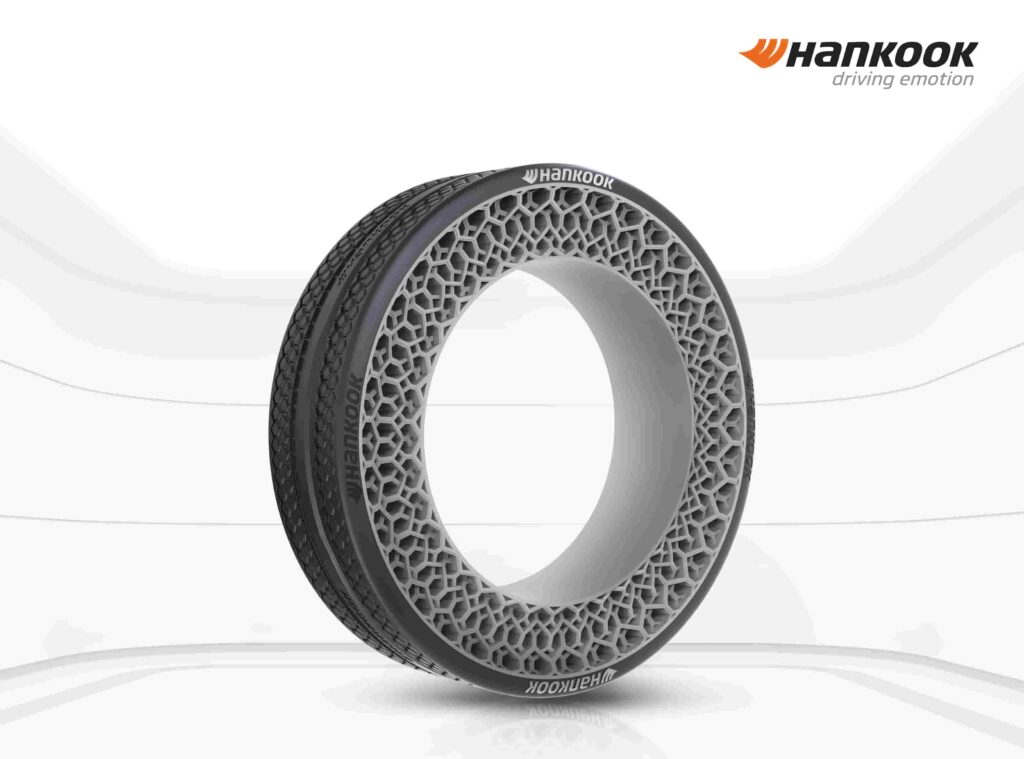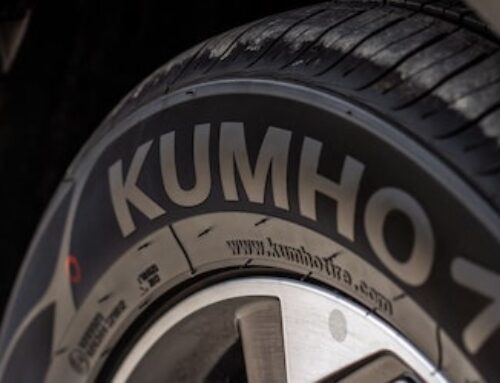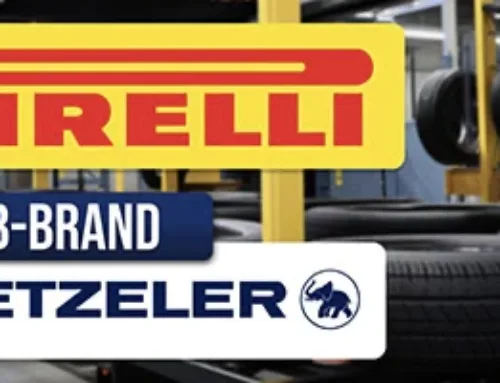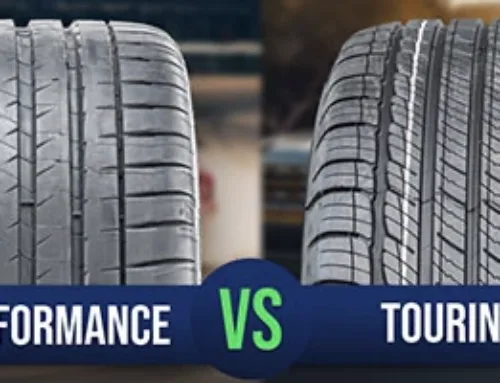Table of Contents
Have you ever found yourself stranded on the side of the road with an unexpected flat tire? If so, you’re not alone, and the future of tires might just bring you some much-needed relief from switching out your spare tire in the rain. While there are several concepts for future tires, airless car tires are one of the most exciting innovations. Find out about this compelling new technology, how it works, and most importantly, when you can expect to see it on the road.

Understanding airless tires
So, what exactly are these futuristic tires? Airless tires, or non-pneumatic tires (NPT), are exactly what they sound like—tires that don’t need air. They have a unique, spoke-like structure on the inside of a rubber tread, which replaces the need for pressurized air. Picture a tire you can see through, resilient yet flexible.
So how do they work while still being as robust and reliable as our trusty, air-filled tires? Well, the design of the spokes inside the rubber tread is designed to flex and bow with pressure, so they can adjust to the road just like your regular pneumatic tires, maintaining a comfortable ride while being immune to punctures.
The history of removing air pressure from tires
The concept of tires that don’t need to be inflated has been around since the beginning of the 20th century. The early incarnations of airless tires were designed to reduce the need for precious rubber and used various springs in different shapes and configurations. However, these tires were difficult to make and maintain.
Fast forward to the 1960s, and we see a resurgence of interest in airless tires, this time for space exploration. NASA developed metal mesh wheels with riveted treads for the Lunar Rover used in the Apollo missions. These airless tires were perfect for the moon’s surface, where sharp rocks and extreme temperatures would have compromised traditional tires and where a puncture could ruin the whole mission.
In more recent history, companies have been revisiting the concept of airless tires for a variety of vehicles. One notable project is the Resilient NPT by Resilient Technologies, which began in 2002. The design of the Resilient NPT used modern polymer materials formed into a web of honeycomb-like cells that can flex and spring back upon impact, providing the shock absorption traditionally offered by the air in a pneumatic tire. Unfortunately, this tire was expensive and difficult to make, so it’s still not in production.
Today, major tire manufacturers like Michelin, Bridgestone, and Hankook are investing in the development of airless tire technology. Michelin UPTIS tires (Unique Puncture-proof Tire System) are even expected to be an option on some GM vehicles in 2024.
Advantages of airless tires
Let’s dive into the benefits of these futuristic wheels and answer the question: “‘Are airless tires good?” No flat tires—imagine a world where the dreaded flat tire is a thing of the past. Airless tires, with their robust structure, can’t have punctures as there is no air to deflate. Plus, you won’t need a spare tire if you can’t have flats!
- Lower maintenance—Unlike traditional tires, you won’t have to check your air pressure all the time, and you don’t have to worry about punctures either, so maintaining these future airless tires should be easier.
- Increased durability—With no inner tube or pressurized air to worry about, these tires can take a beating. This means, hopefully, improved durability and a longer lifespan. Although we’ll still need to see about tire wear on the treads.
- Safety—Blowouts and other tire-related issues are responsible for over 600 deaths a year, according to the National Highway Traffic Safety Administration (NHTSA). Without air in your tires, blowouts are impossible. You’ll still need to check your tires for signs of wear, but this removes one major risk factor.
- Environmental impact—Airless tires could mean a reduction in waste produced by damaged or worn-out tires as they should last longer than conventional tires. There’s a hope they’ll improve fuel economy too, but there isn’t yet enough information to confirm or deny this.
Disadvantages of airless tire technology
Like any new technology, airless tires aren’t without their drawbacks, although many of these are based on guesswork:
- Weight—As these tires aren’t filled with air, they are likely to need more material to create a durable tire. This means they could be heavier than your regular tires.
- Road noise—The open structure of these tires, and the fact that more surface area comes in contact with the road, might lead to increased road noise.
- Comfort—The air in our tires today provides us with some cushioning. Although the designs of these futuristic tires are meant to provide suspension, will they be as comfortable as your regular tires?
- Cost—As with any new technology, there could be a higher initial cost. But with the potential for increased durability, it could be an investment worth making. Plus, costs will probably go down a few years after they launch if they’re successful.
When will airless tires hit the road?

As of now, a few airless tires are beginning to hit the roads in commercial vehicles, while other models are still under development as the tire industry races to join this growing trend:
- Michelin: If you go to Singapore, you can see UPTIS Michelin airless tires on DHL vehicles around the country. Besides that, UPTIS prototypes have been fitted on a fleet of vehicles in Las Vegas and Thailand. The brand hopes to release them commercially for passenger cars in 2024.
- Bridgestone: With their second generation air-free concept NPT released in 2013, the company is now focussing on some of the issues that come with any new technology—namely, working out how to stop debris from getting trapped between the spokes and ensuring weight distribution is even. With these issues, release for passenger cars could be as much as a decade away.
- Goodyear: Goodyear’s NexTrek tires are currently undergoing testing, with the goal of rolling them out on commercial autonomous and consumer electric vehicles.
- Toyo Tires: Japan’s Toyo has developed the “neo-futuristic airless concept tire Noair” that is awaiting changes in regulations to allow them to be driven on the roads in Japan.
- Hankook: South Korean Hankook is continuing R&D on their new i-Flex airless tires, so watch this space.
Frequently Asked Questions
What is the future of automobile tires?
The future of automobile tires at present looks like it’s the realm of airless tires. We’re witnessing a rapid evolution in tire technology that’s set to transform the way we drive. Airless or non-pneumatic tires (NPT) are designed to eliminate the risk of flat tires and hopefully improve longevity.
Also on the horizon are Goodyear’s self-charging and regenerating tires, with AI technology, that could adapt to the terrain and road conditions they’re driving over. Eco-conscious drivers can also look forward to more environmentally friendly tires manufactured from more sustainable materials and designed to be more fuel efficient, with reduced rolling resistance, aligning tire production with our growing need for environmental responsibility.
What is the future of tire manufacturing?
The future of tire manufacturing is poised to be a blend of innovation, sustainability, and high technology. As we move forward, we can expect to see more manufacturers developing airless or NPT, designed to eliminate flats and offer improved durability. At the same time, there’s a strong push towards ‘green tires’, with lower rolling resistance, and those made from sustainable or recycled materials, reflecting the industry’s commitment to environmental responsibility. Also, keep an eye out over the next few years for cutting-edge technologies like smart tires that communicate with vehicles. In essence, tire manufacturing in the future will be about creating safer, more efficient, and more eco-friendly tires through technology and innovation.
Who made airless tires?
Airless tires, also known as non-pneumatic tires, are currently being developed by manufacturers including Michelin, Bridgestone, Toyo, Hankook, and Goodyear. They have all made significant strides in the research and development of airless tire concepts. For instance, Michelin’s UPTIS technology and Hankook’s i-Flex are both well-known examples of tires without air. While these tires aren’t widely available yet for consumer vehicles, they represent a fascinating glimpse into the future of the industry.
Are airless tires better than regular tires?
The ideas behind airless tires have many advantages over a traditional tire, but they are still mostly in development. Airless tires are flat-proof tires, which should have some notable advantages like eliminating flat tires and reducing maintenance since they don’t require air pressure checks. These benefits can translate into increased safety and potentially lower long-term costs.
However, as most airless tires are still in the development phase, questions about their performance in various driving conditions, their cost, and their overall durability compared to traditional tires are yet to be fully answered. So, while the future of airless tires is promising, it’s important to keep an eye on ongoing developments and tests to make a fair comparison with regular tires.
How long do airless tires last?
Since airless tires are still largely in the research and development phase, concrete lifespan estimations are not readily available. Once these tires are commercially available and have been used widely, more specific information will likely be available. We recommend keeping an eye on the latest news from tire manufacturers and automotive industry reports for the most current information.









